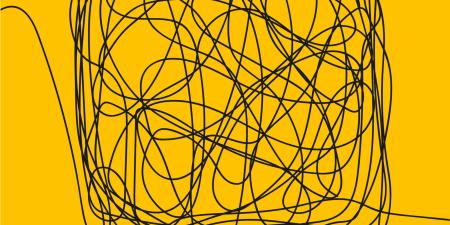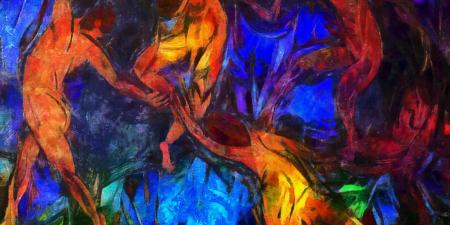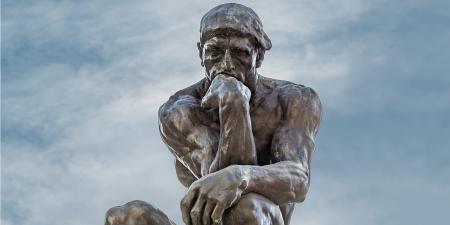In a complex health care environment, like the one in which I practice, some days it feels like the number of things that can go wrong match the many things that go right. Take, for example, Ms. Smith. A month ago she noticed a sore throat that she couldn’t shake and called the office for further direction. Unfortunately, the message ended up in our office’s “medication desk,” rather than the “message desk,” and those folks don’t interact with each other, so Ms. Smith waited for a response in vain. When she was seen more than a week later, she was annoyed by the delays; the overworked and beleaguered urgent care physician, Dr. Jones, was way behind by the time he met her and was moving briskly and defensively. Low-grade fever, erythematous pharynx. The doctor ordered rapid strep and influenza swabs (both negative). A week later, the patient’s condition had not improved, so over the phone the nurse ordered a CT scan to search for a deep neck abscess—also negative. Had the adverse circumstances for communication, reflection, and teamwork not conspired against them, Ms. Smith might have shared her subacute systemic decline with Dr. Jones, along with the fact that her husband had died the year before, compounding her pain with grief and isolation, and Dr. Jones might have noticed her petechiae. Had the preparation been right, they might have found a path to mutual empathy, a collaborative alliance, and a complete blood count four weeks before the subsequent emergency department visit that established the diagnosis of acute myelogenous leukemia (AML).
Dr. Jones knows all about AML—the pathobiology, genetics, epidemiology, staging strategies, treatment algorithms, and prognosis—yet he missed the subtle clues in her story and examination, and his exceptional scientific preparation was flummoxed by insufficient preparation to communicate with a suffering patient or impact a system that left him and his team disconnected and vulnerable in ways that they could not anticipate or ameliorate.
Some stresses on the unraveling fabric of our health system include the widening gap between clinician and patient, inequitable disparities in access to and outcomes of care, the high prevalence of burnout and loss of purpose among health care professionals, the favoring of a purely intellectual over a holistic view of patient care, and our culture’s “losing sight of how the arts and humanities inform and elevate the work of healing” [1]. The medical humanities can be a tool to address and remediate specific deficiencies in the existing science-based curriculum and medical culture.
Medical humanities is a broad interdisciplinary field that uses the humanities, ethics, social sciences, and the arts to understand health and disease and to improve medical education and medical care. By “applied medical humanities,” I refer to interactions with literature, poetry, photography, film, theater, visual art, music, and so on, intended to address specific healing competencies that are in some sense related to biomedical science and to thereby promote behaviors, beliefs, skills, and practices that can improve individual and societal health.
While young, the field and the methods have gained steam [2] and, hence, attracted criticism. In traditional quarters, there may be criticism of the medical humanities as “soft” science. Another commonly encountered and acknowledged challenge is that of finding time in the already compressed and intense medical school curriculum. The pressure on curricular time means that humanities interventions are frequently optional. One could argue that, treated this way, they attract those least likely to need them. Ultimately, justifying time and resources spent on humanities initiatives will require demonstrating their impact on specific training needs and clinical outcomes.
Abilities and traits that can be influenced by such pedagogy are many and include communication, teamwork, empathy, reflective practice, comfort with ambiguity, and specific doctoring skills such as physical examination and clinical decision making. Emerging data indicate that training in the humanities is associated with better doctoring skills [3]. The applied medical humanities can encourage health care professionals to become more humanistic (e.g., reflective, empathetic, collegial) or can teach traditional medical skills in ways that turn out have a greater or more enduring impact (e.g., physical examination, clinical thinking, communication). For example, three decades later I recall almost every “clinical” detail (including the profound portrayal of suffering) in Flannery O’Connor’s The Enduring Chill, yet was unable to memorize or utilize the same content when presented with a textbook list of brucellosis symptoms.
There are many ways of integrating the humanities into education and training. Such experiences can be had in classrooms or in clinics, alone or in groups. Medical humanities can be the central theme for required classes (e.g., doctoring, the patient experience, history of medicine) or can be used to enrich and extend existing courses (e.g., interviewing, physical diagnosis, palliative care). Medical schools, residencies, fellowships, or CME programs can offer elective enrichment experiences for those with either special interests or special needs. For example, the Harvard Medical School course “Training the Eye” integrates fine arts observation exercises, related lectures on physical examination, and bedside clinical rounds to develop and reinforce core physical examination skills for first-year medical students [4]. These methods have been adapted to address more sophisticated physical examination skills for internal medicine residents. The Brigham and Women’s Hospital internal medicine residency uses art museum-based exercises to teach challenging ACGME-required competencies in multidisciplinary teamwork, communication and professionalism. Thomas Jefferson Medical School is initiating a humanities- and arts-based reengineering of the first-year curriculum to improve empathy and reflection and prevent burnout [5].
One beautiful aspect of applied medical humanities is the flexibility with which they can add value at any stage of training. In almost all cases no prior training is required. Because they lie outside the traditional scientific domains and, perhaps, outside trainees’ inhibitions, the medical humanities can also reopen doors to ways of learning that may have been securely locked. Finally, the humanities provide a unique opportunity for colleagues to interact outside the typical disciplinary and hierarchical divides (e.g., promoting teamwork between physicians and nurses, surgery and anesthesia, patients and clinicians).
How could exposure to the medical humanities have changed the fates of Ms. Smith and Dr. Jones? Imagine that personal experience with narrative could increase Dr. Jones’s sensitivity to the factors contributing to his patient’s stress and disengagement and his willingness to raise them even in a brief encounter. Imagine that Dr. Jones’s physical examination course in medical school included visual arts training, which has been shown to increase participants’ ability to expand the quantity and depth of accurate clinical observations [6]. Imagine that the full clinic staff had participated in multidisciplinary team-building exercises using staged theatrical scenarios to get to know each other, break down rigid hierarchical structures, and improve bidirectional communication—all of which might have helped everyone overcome barriers within the clinic and between clinic and patient. Imagine that Dr. Jones’s professional identity was well-grounded and buoyed by exploration of the works of physician-poets William Carlos Williams or Rafael Campo. One could imagine that the clinic staff would be more attentive to patients and each other, more able to communicate, and more flexible in approaches to problem solving. One could imagine that leadership training anchored in literature, history, or film could even inspire doctors to take on the deeply embedded systems-based deficits in the flawed clinic structure that set the stage for the Smith-Jones, and many other, encounters.
References
- Campo R. “The medical humanities,” for lack of a better term. JAMA. 2005;294(9):1009-1011.
-
Premier academic institutions, such as University of Texas Medical Branch at Galveston, Northwestern University Feinberg School of Medicine, University of Colorado Anschutz Medical Campus, College of Physicians and Surgeons at Columbia University, University of Louisville School of Medicine, the Morsani College of Medicine at the University of South Florida, and the Warren Alpert Medical School at Brown, to name a few, have elevated medical humanities to the level of a scholarly center or degree-granting program.
- Wershof-Schwartz A, Abramson JS, Wojnowich I, Accordino R, Ronan EJ, Rifkin MR. Evaluating the impact of the humanities in medical education. Mt Sinai J Med. 2009;76(4):372-380.
- Miller A, Grohe M, Khoshbin S, Katz JT. From the galleries to the clinic: applying art museum lessons to patient care. J Med Humanit. 2013;34(4):433-438.
-
Rush IR. Restoring left-brain activities to medical school. Philadelphia Inquirer. June 15, 2014. http://articles.philly.com/2014-06-15/news50600582_1_burnout-medical-students-salvatore-mangione. Accessed June 22, 2014.
- Naghshineh S, Hafler JP, Miller AR, et al. Formal art observation training improves medical students’ visual diagnostic skills. J Gen Intern Med. 2008;23(7):991-997.



